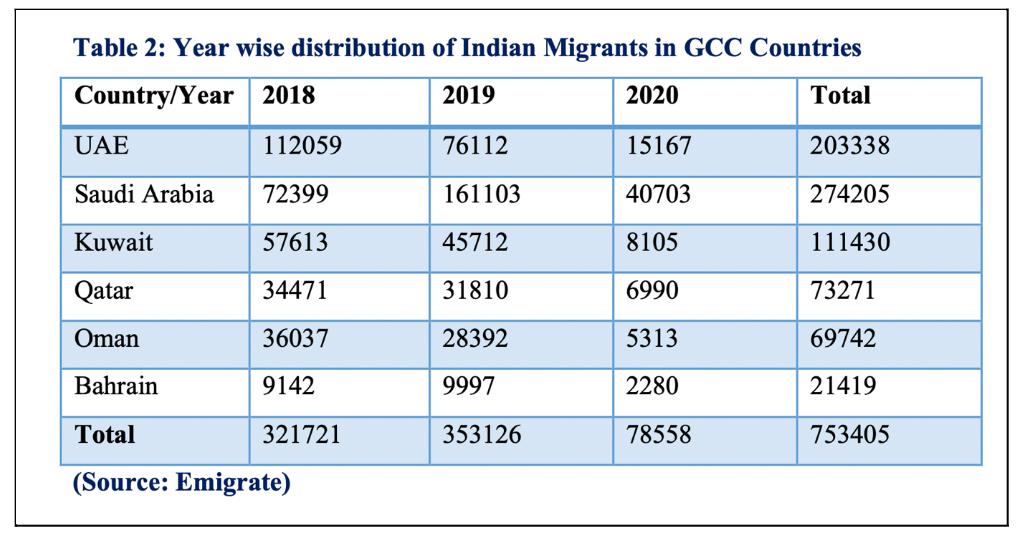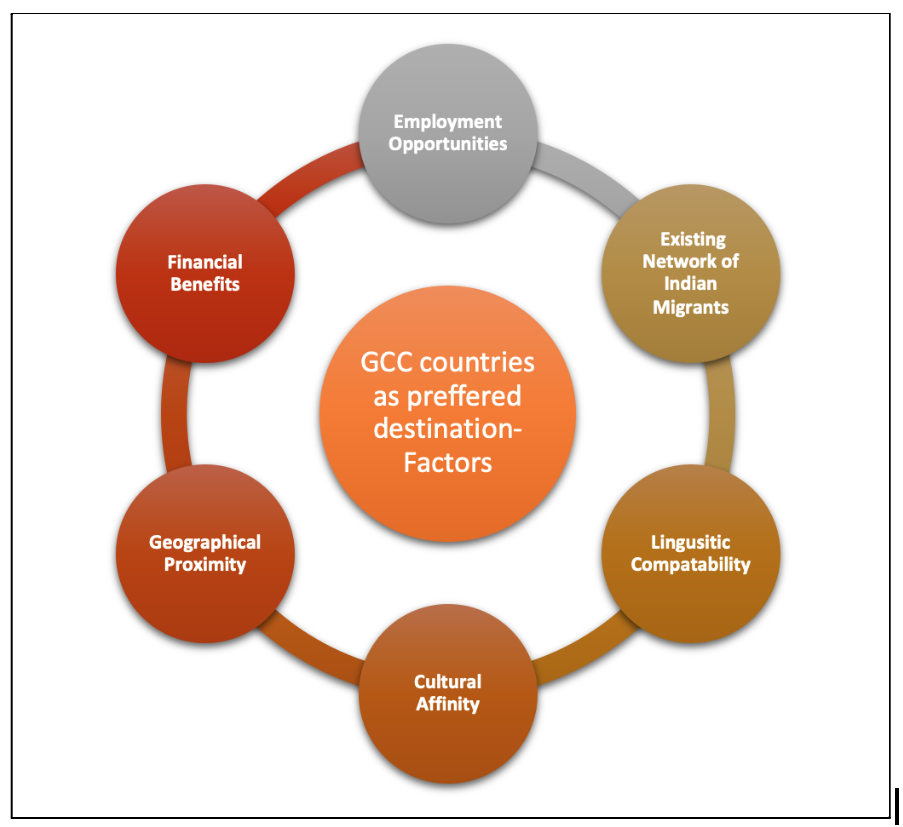Millions of Indian immigrants were repatriated from various countries during the COVID-19 pandemic. The ‘Impact of COVID-19 on India’s International Migration’ published by the Ministry of External Affairs’ India Centre for Migration (ICM) highlighted multiple issues of Indian Immigrants who repatriated during COVID-19. Here is a review.
The COVID-19 pandemic has impacted various walks of human life. The lockdown measures initiated by various countries to control the spread of the pandemic had a direct impact on the economic activity, the impact of which has percolated into other spheres of life resulting in – unemployment, loss of income, and dislocation, etc.
Migrant populations in various countries are among the most affected communities because of the pandemic, with many of them facing uncertainty not only in the country of work but also back home. Questions over their jobs, restrictions on travel, challenges with remittances, etc. have compounded the impact of the pandemic. Knomad’s Migration & Development Brief-34 for 2020, highlights the impact of the COVID-19 pandemic on the international migrant populations and the trends in remittances. The World Migration Report – 2022, notes that the volume of international remittances fell by 2.4% in 2020 compared to 2019. India being the leading country of origin for immigrants and the number one destination for remittances has also felt the impact of the COVID-19 pandemic. Migration & Development Brief-34 highlights the case of Indian migrants.
While these reports provide an international perspective, “Impact of COVID-19 on India’s International Migration” published by the Ministry of External Affairs’ India Centre for Migration (ICM) provides India’s evaluation of the impact of COVID-19 on the migrant population. Responding to a question in Lok Sabha recently, the Government of India referred to this study report as an analysis of the impact of COVID-19 on international migration from India.
The highest number of immigrants repatriated from GCC Countries
Countries of the GCC (Gulf Cooperation Council) constitute the major share of Indian migrant workers abroad. As per the data provided by World Bank, there are 8.5 million Indian workers in GCC countries, which constitute around 65% of the total NRI community from India. The onset of the pandemic has resulted in the destination countries enforcing lockdowns. Many of the migrant workers in these countries were left stranded and faced challenges like loss of income, depletion of savings, limited access to medical and housing facilities, etc. These led to requests for the repartition of the international migrants to India.
The Government of India launched the ‘Vande Bharat Mission’, on 7 May 2020, to facilitate the safe repatriation of international migrants to India. As per the information provided by the government in Rajya Sabha on 22 July 2021, a total of 60.92 lakh Indians were brought back from foreign countries during COVID-19 under the ‘Vande Bharat Mission’.
Out of them, 25.44 lakhs were repatriated from the UAE. A further 4.79 lakhs were repatriated from Saudi Arabia. Other GCC countries like Qatar, Oman & Kuwait make up the rest of the top 6 countries. A total of 3.98 lakhs were repatriated from the USA, the third-most in the list of countries with the most repatriations.
GCC Countries are a preferred choice for Indian Emigrants
ICM’s study report notes that the top-5 GCC countries from which Indians were repatriated are also the top-5 countries destination countries for emigrant workers in the ECR (Emigration Check Required) category.

The study report further observes that a majority of the Indians in GCC countries are blue-collared workers. Over the years, GCC countries have emerged as the preferred destination for Indian migrants due to factors like – employment opportunities, presence of an extended network of Indian migrant workers, cultural affinity, linguistic compatibility, geographical proximity to that of the USA or Europe, etc.

Oil & Gas, Construction, Tourism & Hospitality, are among the sectors impacted by COVID-19
The immigration data & the repatriation numbers invariably point out GCC countries to be the key for Indian immigrant workers. Understanding the impact of COVID-19 on the specific sectors where the Indian immigrant workers are employed in these countries, would provide better insights into the current impact on the immigrant workers and the future outlook.
ICM’s report looks into four such sectors. Here is a snapshot of these sectors and the possible impact of COVID-19 on the immigrant workers.
- Oil & Gas Sector: The oil & Gas sector is a key component of the GCC economies. The lower demand for oil & gas during the pandemic and the disruptions caused by the pandemic have dealt a double blow to this sector in these countries. This sector accounts for nearly 60% of the GCC countries’ government revenues. Various international reports point to a downturn in the economy in countries like Oman, Bahrain, etc. with the fall in revenues from this sector.
- Construction Sector: The construction sector hires the maximum number of expatriate workers. “Labour” is the most prominent category among those migrating to GCC countries. While remote working policies were implemented for most of the other sectors, the same was not feasible in this sector for obvious reasons. Apart from the risk of losing employment, these workers are also among the high-risk group to be infected with COVID-19 due to factors such as – cramped housing, lack of access to health care, lack of social protection plans, etc.
- Tourism & Hospitality: Globally, the tourism & hospitality sector is among the most impacted due to COVID-19 related lockdown measures. As per United Nations World Tourism Organization, International arrivals dropped by 74% in 2020. This has resulted in job losses & salary cuts. Countries like UAE took measures to ease the burden on Industry and alleviate the condition of migrant workers.
- Professionals: Apart from the impact on blue-collar migrant Indian workers, the returnees from GCC countries also include professionals like engineers, bankers, sales executives, etc. One of the main reasons for the influx to India is the stricter VISA regimes of a few of the countries due to the COVID-19 pandemic. For example, Kuwait has brought in legislation that cuts down the total number of migrant workers in the country by 40% and has an upper limit on Indian workers in Kuwait not to exceed 15% of Kuwait’s population.
Impact of the COVID-19 pandemic on the remittances
India is the world’s leading destination for remittances. A major source of remittances to India are the Gulf Countries. ICM’s report cites the initial Global estimates, wherein it was projected that there would be a sharp decline of about 20% in the global remittances in 2020. The contraction of economic activity resulting in loss of employment and income among migrants is cited as the reason for the fall in the remittances.
However, the Migration & Development Brief for 2020 states that there is only a marginal fall in the global remittances in contrast to the initial estimates during the pandemic. The value of Global Remittances fell to USD 705.5 billion in 2020, compared to USD 722 billion in 2019, better than many of the initial projections of decline. Factly had earlier written on the trends in global remittances and it can be read here.
In contrast to the apprehensions in the study report where-in, the remittances to India are projected to fall by 23% in 2020, and the actual remittances to India fell only by a slight margin. Inward remittances to India were USD 83.3 billion in 2019 and fell to USD 83.15 billion in 2020. As per Migration & Development Brief – 35 for 2021, the remittances to India in 2021 increased to USD 87 billion.
While job losses, lower salaries, etc. because of the COVID-19 pandemic are true in the case of migrant workers, the less than anticipated decline in remittances could be because of the migrant workers sending money home in view of the COVID-19 distress back home i.e., in India.
The study report identifies the new scope of opportunities and the need for reskilling
As highlighted, ICM’s study report released in March 2021 predicted a major fall in the remittances during the COVID-19 pandemic based on the early estimates. However, the latest data shows that there is only a marginal fall, and the situation has improved in 2021. Nevertheless, the other aspects highlighted in the study report i.e., the impact on various sectors, challenges faced by migrants and the repatriation, etc., still hold good. In this context, the observations made in the study report on the new opportunities in the wake of the pandemic and its recommendations remain relevant.
The report identifies two key emergent areas of opportunities:
- Health Care sector
- Information & Communication Sector
The report highlights the need for rehabilitating & reskilling of the migrant workers who have returned to India. The central government and respective state governments have taken up initiatives towards this. Kerala, which has the highest number of migrant workers, especially from GCC countries has adopted various strategies for returnee rehabilitation. One of the key steps towards this is the classification of the returnee migrants into two major categories:
- Those willing to re-migrate
- Those planning to settle down.
Even at a national level, efforts of rehabilitation for those willing to stay back include employment and livelihood opportunities under schemes like – PMEGP, MGNREGS, Deen Dayal Upadhyaya Grameen Kaushalya Yojana, Deen Dayal Antyodaya Yojana- National Urban Livelihoods Mission, Make in India initiatives, etc.
Re-skilling and up-skilling for those planning for re-immigration were suggested in the Study report. Skilled Workers Arrival Database for Employment Support (SWADES) launched by the National Skill Development Corporation (NSDC) is also an effort in this direction by doing skill mapping of returnee migrants and to facilitate the matching of skills with corresponding job roles in new markets.
Featured Image: Indian Immigrants repatriated during COVID-19


